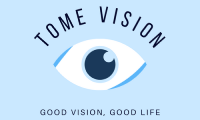The Anatomy of the Human Eye: A Brief Overview
Introduction:
The human eye is a complex organ that plays a vital role in our ability to see and make sense of the world around us. Understanding the anatomy of the eye can help us appreciate its complexity and the importance of taking good care of it. In this article, we will provide a brief overview of the main components of the eye.
Outer Layers:
The eye is protected by various outer layers that shield it from external harm. The first layer we encounter is the cornea, which is a transparent dome-shaped tissue located at the front of the eye. The cornea acts as a protective barrier and helps to focus incoming light. Surrounding the cornea is the sclera, commonly known as the white of the eye. The sclera provides the necessary structural support and is made up of a tough, fibrous tissue. It also helps maintain the shape of the eye and protects delicate inner structures.
Internal Structures:
Moving inwards, we discover the iris, a colored ring of muscle that surrounds the pupil. The iris has the remarkable ability to control the size of the pupil, regulating the amount of light that enters the eye. This process is crucial as it enables us to adapt to different lighting conditions. Behind the iris, we find the lens, a flexible and transparent structure involved in fine-tuning the focus of light onto the retina.
Retina and Optic Nerve:
The retina, located at the back of the eye, can be compared to a camera film. It is responsible for capturing light and converting it into electrical signals that can be interpreted by the brain. The retina contains millions of specialized cells called photoreceptors, which can be further categorized into two types: rods and cones. Rods are responsible for black and white vision and play a crucial role in peripheral and dim light, while cones are responsible for color vision and are concentrated in the central part of the retina.
The optic nerve, often referred to as the “cable” of the eye, carries the electrical signals generated by the retina to the brain for interpretation. The point in the retina where the optic nerve leaves the eye creates a small blind spot in our field of vision. Remarkably, our brain compensates for this blind spot by using the surrounding visual information to fill in the missing details, resulting in a seamless and developed perception of our surroundings.
Bullet list:
– The cornea: a transparent tissue barrier that protects and focuses incoming light.
– The sclera: the tough, fibrous tissue that surrounds and supports the eye.
– The iris: a colored ring of muscle that controls the size of the pupil.
– The lens: a flexible and transparent structure that fine-tunes the focus of light onto the retina.
– The retina: the light-sensitive tissue at the back of the eye responsible for capturing and converting light into electrical signals.
– Photoreceptors: specialized cells (rods and cones) in the retina that enable us to see.
– The optic nerve: a cable-like structure that carries electrical signals from the retina to the brain.
Conclusion:
The human eye is an extraordinary organ that allows us to perceive the world in all its wonders. Its complex anatomy, from the outer protective layers to the specialized cells in the retina, plays a crucial role in our ability to see. By understanding the various components of the eye, we can develop a greater appreciation for its capabilities and take better care of its health. Regular eye check-ups and proper eye care habits, such as wearing protective eyewear and maintaining a healthy lifestyle, are crucial for preserving our vision and overall ocular health.
